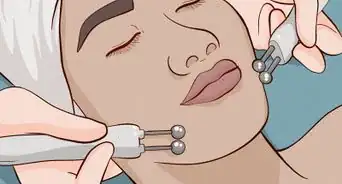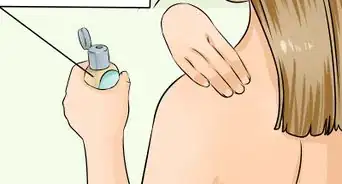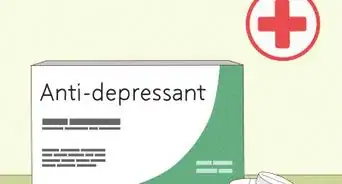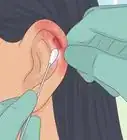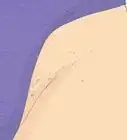This article was co-authored by Mohiba Tareen, MD. Mohiba Tareen is a board certified Dermatologist and the founder of Tareen Dermatology located in Roseville, Maplewood and Faribault, Minnesota. Dr. Tareen completed medical school at the University of Michigan in Ann Arbor, where she was inducted into the prestigious Alpha Omega Alpha honor society. While a dermatology resident at Columbia University in New York City, she won the Conrad Stritzler award of the New York Dermatologic Society and was published in The New England Journal of Medicine. Dr. Tareen then completed a procedural fellowship which focused on dermatologic surgery, laser, and cosmetic dermatology.
This article has been viewed 189,197 times.
Exfoliating your skin can leave it youthful and glowing. But there’s a delicate balance between just enough exfoliation and too much. Over-exfoliating can occur from using products that are too strong or improper application techniques. This can leave your skin glowing red and irritated or even burn or scar it. Over-exfoliation can cause pain and discomfort and affect your appearance until the skin heals. You can heal over-exfoliated skin by treating it at home and soothing painful areas.
Steps
Soothing Over-Exfoliated Skin
-
1Detect over-exfoliated skin. If you suspect you applied the wrong strength product, applied too much pressure, or used too many exfoliators at once, look for symptoms of over-exfoliated skin. These may include:[1]
- Redness
- Flaking
- Irritation
- Burning sensation
-
2Apply cool compresses. Gently press a cool, clean washcloth on skin you have over-exfoliated. Hold on your skin for a few minutes or until your skin feels less irritated. Avoid rubbing the washcloth over your face, which can make irritation worse. Repeat doing this as necessary.[2]Advertisement
-
3Press on aloe gel. Gently dab on a thin layer of aloe gel. This can soothe irritation and promote healing of areas you over-exfoliated.
- Keep the aloe gel in your refrigerator for added cooling and soothing benefits.
-
4Take an anti-inflammatory pain reliever. Use a non-steroidal anti-inflammatory, or NSAID, medication if your over-exfoliated skin causes you pain. NSAIDs can ease your discomfort and may minimize any inflammation on your skin. Follow your doctor’s instructions or the dosing recommendations on the packaging. The most common over-the-counter NSAIDs you could use are:[3]
- Aspirin
- Ibuprofen (Advil, Motrin)
- Naproxen (Aleve, Naprosyn)
Treating Over-Exfoliated Skin
-
1Use a gentle cleanser. When you wash your face each day, use a gentle and non-foaming cleanser.[4] Use lukewarm or cool water and lightly work the cleanser over your skin. This can minimize the risk of further irritation and clear away bacteria or germs that could cause infection.
- Use a gentle, non-foaming cleanser to wash your face. Avoid using anti-aging creams.
- Avoid products with exfoliants, fragrances, or retinols because they can irritate or exfoliate your skin even more.[5]
- Allow the skin to heal completely before beginning your new, toned-down exfoliating regimen.
-
2Pat your skin dry. Rubbing your skin dry can easily irritate already fragile skin. After you’ve cleansed your skin, gently pat it dry with a clean towel. This can prevent further irritation.[6]
-
3
-
4Dab on a hydrocortisone cream. Put a 1% hydrocortisone cream on top of moisturizer twice a day. Focus the cream on irritated areas for up to two weeks. Hydrocortisone cream can ease irritation and inflammation. It can also get out any red on your skin and provide a barrier from bacteria or germs.[9]
-
5Consider a vitamin C cream. Use a mild vitamin C cream instead of hydrocortisone if you prefer something more natural. At a concentration of about 5%, vitamin C cream may soothe your skin and help it heal faster.
- Avoid exposing any area with vitamin C cream to the sun. Vitamin C creams and lotions can make you especially sensitive to the sun. Covering yourself up can protect you from sunburn and further irritation and inflammation.
-
6Layer on vitamin E oil. Gently apply a thin layer of vitamin E oil on your over-exfoliated skin. This can keep your skin moisturized, soothe any discomfort, and promote healing.
-
7Avoid the sun or wear sun protection. If you’ve over-exfoliated, you took off not only dead skin cells, but new ones as well. This can expose delicate, new skin that is prone to sunburns. Protect your skin and promote healing by staying out of the sun if possible. Wear sunscreen or sunblock even if you’re just running errands. This can minimize the risk of sunburn, further inflammation and irritation, and hindering the healing process.
-
8Go au-natural. Wait a few days to a week to return to your normal skincare and makeup routine. This gives your over-exfoliated skin time to heal completely before you apply anything with chemicals on it. It can also minimize irritation and speed up the healing process.[10]EXPERT TIPMohiba Tareen is a board certified Dermatologist and the founder of Tareen Dermatology located in Roseville, Maplewood and Faribault, Minnesota. Dr. Tareen completed medical school at the University of Michigan in Ann Arbor, where she was inducted into the prestigious Alpha Omega Alpha honor society. While a dermatology resident at Columbia University in New York City, she won the Conrad Stritzler award of the New York Dermatologic Society and was published in The New England Journal of Medicine. Dr. Tareen then completed a procedural fellowship which focused on dermatologic surgery, laser, and cosmetic dermatology.FAAD Board Certified Dermatologist

 Mohiba Tareen, MD
Mohiba Tareen, MD
FAAD Board Certified DermatologistOur Expert Agrees: As you restart your skincare routine, start by introducing one product at a time over a period of a few weeks. This will let your skin's oil glands adjust to the products and prevent any unwanted reactions.
-
9See a dermatologist. If you notice your irritation worsening or it won’t go away after a week, make an appointment with your dermatologist. They can determine if you have severe damage or an infection on your skin.[11] Depending on their exam, you may receive a prescription for a stronger cortisone cream or a prescription barrier repair cream.[12]
References
- ↑ https://www.newbeauty.com/blog/dailybeauty/8685-are-you-over-exfoliating/
- ↑ https://www.realsimple.com/beauty-fashion/makeovers-tips/treat-minor-beauty-injuries/red-raw-skin-exfoliation
- ↑ http://www.healthline.com/health/pain-relief/otc-anti-inflammatories#overview1
- ↑ https://www.newbeauty.com/blog/dailybeauty/8685-are-you-over-exfoliating/
- ↑ https://www.realsimple.com/beauty-fashion/makeovers-tips/treat-minor-beauty-injuries/red-raw-skin-exfoliation
- ↑ https://www.newbeauty.com/blog/dailybeauty/8685-are-you-over-exfoliating/
- ↑ https://www.realsimple.com/beauty-fashion/makeovers-tips/treat-minor-beauty-injuries/red-raw-skin-exfoliation
- ↑ https://www.realsimple.com/beauty-fashion/makeovers-tips/treat-minor-beauty-injuries/red-raw-skin-exfoliation
- ↑ http://www.allure.com/story/how-to-deal-with-red-irritated-skin
About This Article
If you spot signs of over-exfoliated skin, such as redness, flaking, irritation, or a burning sensation, you can help it heal by pressing a cool, clean washcloth onto your skin for a few minutes. When you wash your face, use a gentle, non-foaming cleanser to reduce the risk of further irritation and infection. Then, make sure you pat your skin dry instead of rubbing it to avoid making your skin worse. Once you've dried your face, apply a thick moisturizer to soothe your skin and help it heal. For more tips from our Medical co-author, including how to help your skin heal with a hydrocortisone cream, read on!




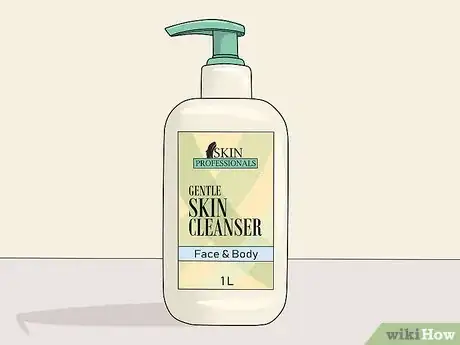




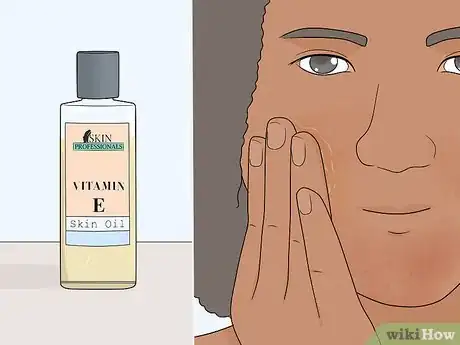



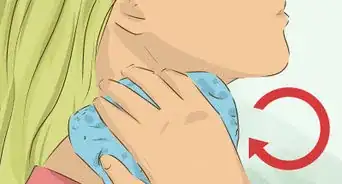
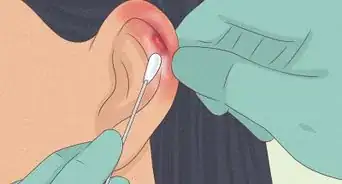
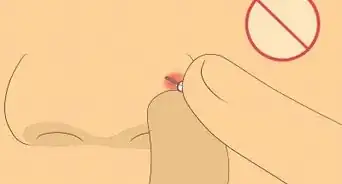
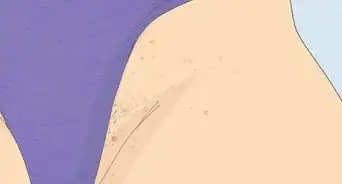
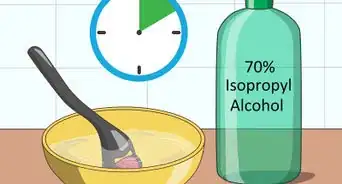
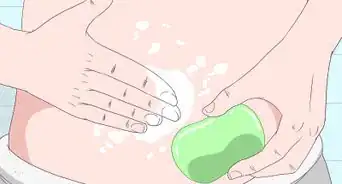
-Electric-Shock-Step-9.webp)

